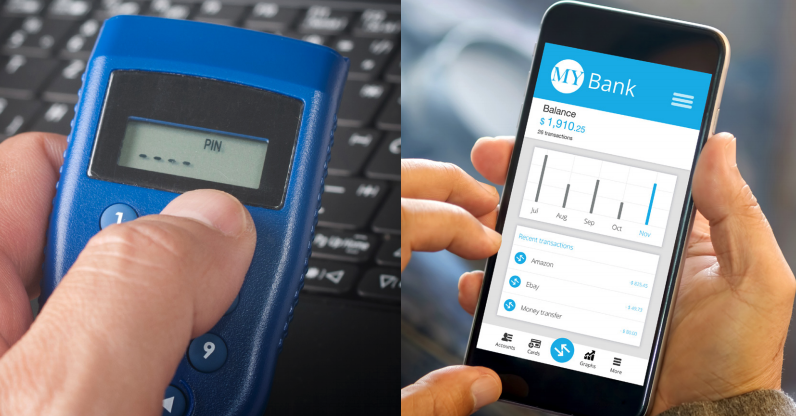Executive Summary
Bank 1:
- Mid-sized bank leverages the OneSpan Mobile Authenticator application to provide a modern customer experience.
Bank 2:
- Supplying commercial customers with hard tokens was costly and inefficient. This bank deployed a software alternative.
Bank 3:
- To further improve their customer experience, this bank integrated the OneSpan Mobile Authenticator application into their native banking app.
Bank 1: Mid-sized Bank Switches from Hard Tokens to Software Authentication
“You need to show that you’re keeping up with the times. If customers don’t see certain functionality, they may think a little less of the bank as a whole. We are, at least for banks our size, more on the leader side than the follower.”
The Motivation
The financial industry is undergoing a period of fierce competition and rapid innovation. Banks are under pressure to keep pace with their mobile banking applications, offer new services, and continually improve their services. After relying on hard tokens for over 10 years, this mid-sized bank deployed software authentication via the OneSpan Mobile Authenticator application to offer their customers the modern experience they have come to expect.
The Switch
When deploying the OneSpan Mobile Authenticator app to their branches, this bank decided to roll it out to new customers first. All new banking customers would receive access to the software authenticator, but the switch became optional for all existing customers. The plan was to phase out the hard tokens from their existing customers over time. With this strategy, they expected to create the highest adoption rate without forcing change on their established, loyal customer base.
“It’s another technology option that you should offer your client base. I can’t really see any downside.”

Bank 2: Offering a Software Token Alternative
“It’s not a migration, it’s an alternative to hard token.”
The Motivation
When relying exclusively on hard token authenticators, the bank had to contend with two issues. The first was cost. To deliver hard tokens to their commercial customers, the bank would send the tokens through the mail. Some tokens would never arrive. Some would arrive broken. Some would be broken by the customer or simply lost. In the end, the bank was investing a significant sum to maintain their hard token approach.
The second driver was commercial customers’ expectations. Software authentication is now an expectation in the market, and if the bank does not support such a solution, clients want to know when they will. This bank aligned their software authentication deployment with the rollout of their new native mobile banking application. In this way, they were able to catch up with the market and provide the integrated token experience customers expect all at once.
The Switch
This bank opted to present their software authentication deployment as merely an attractive alternative to the standard hard tokens. From there, they made the process of switching or adopting as easy as possible for the customer. The strategy was to make the software alternative the most attractive option for their customers with the expectation that customers will flock to it naturally, following the path of least resistance.
“We’re presenting it as an alternative. But once they start using it, clients will realize how great it is. It’s just an additional little bonus that you don’t have to use a hard token unless you really want to—you also have a mobile token option.”
Bank 3: From Two Apps to One
“When you think about the inconvenience of having to remember to bring your hardware tokens to the office, having a mobile device is a wonderful solution. Clients absolutely love it. Clients want mobile tokens. If a bank doesn’t offer the products, services, and usability that clients expect in the marketplace, they will lose business.”
The Motivation
After 15 months using software authentication through the Mobile Authenticator app, this bank was happy with their decision. Their customers eagerly transitioned to the software alternative, because it meant that they no longer needed to carry around one or multiple hard tokens anymore. Instead, they could authenticate with the smartphone they always had on them anyway. Now that their customers were comfortable with the standalone app, the bank plans to integrate Mobile Authenticator into their native application. This will improve the customer experience even further, since their customers will no longer need to switch between two apps. With one application, the customer no longer needs to memorize or write down an OTP.
The Switch
This bank relied on its well-oiled communication team to facilitate the rollout, and a thorough checklist and impact analysis ensured it went smoothly. FAQs were provided to the helpdesk and short video snippets were produced for customers in anticipation of the rollout.
Once deployed, the bank had over 100 customers using the integrated application in the first month and received ample positive feedback. They expected a slow adoption process that would ramp up over time, but it turned out that their clients had been waiting for just such a solution. As soon as it was pushed live, the solution took off with their users.
“Banks are behind if they haven’t already introduced mobile authentication.”






